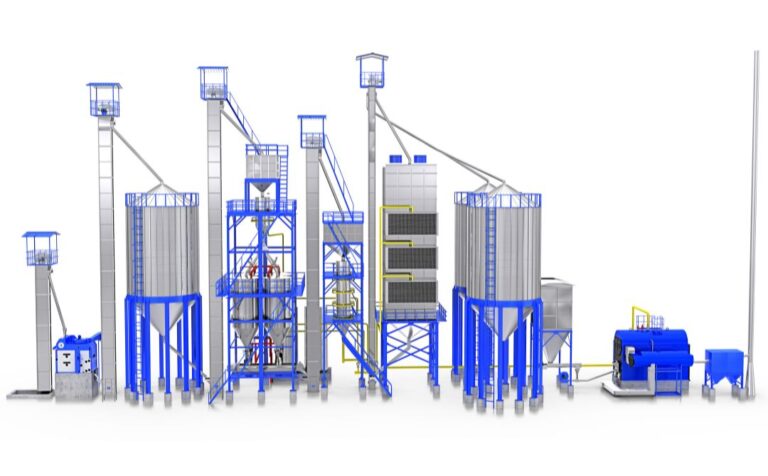Table of Contents
India, with its vast agricultural heritage, produces over 120 million tonnes of paddy annually, making it a global leader in rice production. Yet, the journey from field to plate is complex, requiring precision, efficiency, and innovation to ensure high-quality rice reaches consumers.
At SKF Elixer, we are redefining this journey through our advanced paddy processing units, designed to empower rice millers with cutting-edge technology. Our solutions transform traditional rice milling into a modern, sustainable, and profitable industry, tailored to the needs of India’s diverse agricultural landscape.
This blog delves into the evolution of paddy processing, the role of advanced machinery in enhancing grain quality, and how SKF Elixer’s innovative systems are driving efficiency and profitability for rice millers across the country. Whether you’re a farmer in Punjab, a miller in Tamil Nadu, or a distributor in West Bengal, our insights will guide you toward a smarter, more sustainable future in paddy processing.
The Importance of Modern Paddy Processing
Processing of paddy is the backbone of India’s rice industry, converting raw paddy grain into polished, parboiled, or raw rice ready for consumption. Traditional methods, often reliant on manual labor and outdated equipment, result in losses of 5–10% due to breakage, inefficient drying, or poor moisture control.
For a mill processing 10 tonnes of paddy daily, this translates to a loss of 500–1,000 kilograms of rice, worth ₹25,000–₹50,000 at market rates. Moreover, inconsistent quality affects market competitiveness, especially as demand for high-quality rice grows in domestic and export markets.
Modern rice mills address these challenges by integrating advanced machinery used in paddy processing, such as automated paddy dryers, parboiling units, and high-efficiency mills. These systems reduce grain losses to below 2%, improve yield by 3–5%, and ensure consistent quality, meeting standards like those set by the Food Safety and Standards Authority of India (FSSAI).
For India’s rice mills, adopting smart solutions for modern paddy processing is more of a necessity than just an upgrade, to stay competitive in a market projected to reach ₹5 lakh crore by 2030.
Overview Of Paddy Processing
Effective paddy processing begins with paddy procurement and ends with high-quality rice ready for distribution. SKF Elixer’s integrated solutions streamline each stage, ensuring efficiency, quality, and sustainability. Here’s how the process unfolds:
1. Paddy Procurement and Pre-Cleaning
Quality starts at the source. During paddy procurement, raw paddy is cleaned to remove impurities like stones, husk, and dust, which can account for 2–3% of the weight. Pre-cleaning systems use vibratory sieves and air aspiration to remove 98% of impurities, handling up to 5 tonnes per hour. This ensures only clean paddy enters the processing line, reducing equipment wear and improving rice quality.
2. Paddy Drying and Moisture Control
The rice drying process is critical to prevent spoilage and ensure optimal milling. Paddy with moisture content above 14% risks fungal growth, leading to losses of ₹10,000–₹20,000 per tonne in storage. Industrial rice dryers, equipped with paddy moisture control sensors, reduce moisture to 12–14% in 6–8 hours, handling 2–20 tonnes per batch.
3. Parboiling in Rice
Parboiling strengthens rice grains, reducing breakage and enhancing nutritional value, making it a preferred choice for 60% of Indian consumers. Our parboiled rice process uses automated soaking, steaming, and drying units, processing 3–15 tonnes per hour. The system maintains precise temperature control (70–80°C) to minimize grain cracking, achieving a 4–6% higher yield than traditional methods.
4. Milling and Polishing
The final stage involves husking, whitening, and polishing to produce market-ready rice. Modern milling systems use advanced rollers and polishers to achieve a breakage rate below 1%, compared to 5–7% in traditional mills. Systems also allow customization for raw or parboiled rice, catering to diverse market demands. Read more about the process of paddy parboiling in detail.
SKF Elixer’s Advanced Paddy Processing Solutions
At SKF Elixer, we design paddy processing units that blend innovation with practicality, catering to India’s small, medium, and large rice mills. Our solutions focus on high-yield processing, energy efficiency, and ease of operation, ensuring profitability and compliance. Get in touch.
Turnkey Solutions and Support
SKF Elixer offers end-to-end solutions, from site assessment to installation and training. Our Annual Maintenance Contracts (AMCs) include regular servicing and spare parts, ensuring 98% uptime. For a 5-tonne-per-hour mill, this minimizes downtime losses of ₹5–10 lakh annually, making our systems a reliable investment.
The Importance of Innovation in Rice Milling Industry
Innovation is the cornerstone of modern paddy processing. Modern systems incorporate smart technologies like IoT for real-time monitoring of moisture and grain quality, reducing manual intervention by 70%. For example, a 10-tonne-per-hour mill using our IoT-enabled dryers saves 500–700 man-hours annually, worth ₹1–2 lakh.
Energy-efficient designs cut power consumption by 30%, saving ₹5–10 lakh yearly for a 20-tonne-per-hour plant. These innovations not only boost profitability but also align with India’s push for sustainable agriculture under schemes like the PM Kisan Sampada Yojana.
Benefits of Modern Paddy Processing
Adopting modern rice milling systems offers multiple benefits:
- Improved Grain Quality: Precise drying and parboiling reduce breakage, ensuring 95–98% head rice recovery, compared to 90–92% in traditional mills.
- Cost Savings: Automation and energy efficiency save ₹5–15 lakh annually for medium-sized mills, with reduced labor and maintenance costs.
- Market Competitiveness: High-quality parboiled rice meets export standards, tapping into markets worth ₹40,000 crore annually.
- Sustainability: Efficient systems reduce husk waste by 20%, with options to convert husk into biofuel, generating additional revenue of ₹2–5 lakh per year.
Why Choose SKF Elixer?
With over a decade of expertise, SKF Elixer is a trusted name in India’s paddy processing industry. Our BIS-certified systems are designed for Indian conditions, ensuring durability and performance in humid regions like West Bengal or arid areas like Haryana.
We offer customized solutions, and support, making modernization accessible for mills of all sizes. From a 1-tonne-per-hour unit in Chhattisgarh to a 10-tonne-per-hour plant in Karnataka, we empower millers to achieve excellence.
Conclusion
The paddy processing industry in India stands at a turning point, where modern technology can unlock efficiency, quality, and profitability. SKF Elixer’s advanced paddy processing units, with automated drying, parboiling, and milling, are paving the way for a sustainable and competitive future.
By embracing our solutions, millers can transform challenges into opportunities, delivering high-quality rice to millions while boosting their bottom line. Ready to modernize your rice mill? Contact SKF Elixer to explore our tailored paddy processing solutions and drive your business forward.
FAQs
- How do SKF Elixer’s paddy processing units improve grain quality?
Our units use advanced machinery like automated paddy dryers and parboiling systems with precise moisture control (12–14%) and temperature regulation (70–80°C). This reduces grain breakage to below 1%, ensuring 95–98% head rice recovery, compared to 90–92% in traditional mills, enhancing market value by ₹5–10 per kilogram. - What is the role of automation in SKF Elixer’s paddy processing systems?
Automation, including IoT-enabled moisture and quality sensors, streamlines drying, parboiling, and milling, reducing manual labor by 70%. For a 5-tonne-per-hour mill, this saves 500–700 man-hours annually, worth ₹1–2 lakh, while ensuring consistent quality and compliance with FSSAI standards. - Are SKF Elixer’s paddy processing units suitable for small rice mills?
Yes, our compact units, process 1–5 tonnes per hour and require only 100–200 square meters. With 30–40% lower power consumption, they save ₹2–3 lakh annually, making them ideal for small mills. - How does parboiling in rice benefit millers and consumers?
Parboiling strengthens grains, reducing breakage and improving nutritional value, increasing yield by 4–6% (400–600 kg daily for a 10-tonne-per-hour plant, worth ₹20,000–₹30,000). Consumers prefer parboiled rice for its taste and longer shelf life, boosting demand in domestic and export markets. - What support does SKF Elixer provide for maintaining paddy processing units?
We offer Annual Maintenance Contracts (AMCs) including regular servicing, spare parts, and training. This ensures 98% uptime, minimizing downtime losses of ₹5–10 lakh annually for a 5-tonne-per-hour mill, with support for seamless operation.
Good reads are meant to be shared









